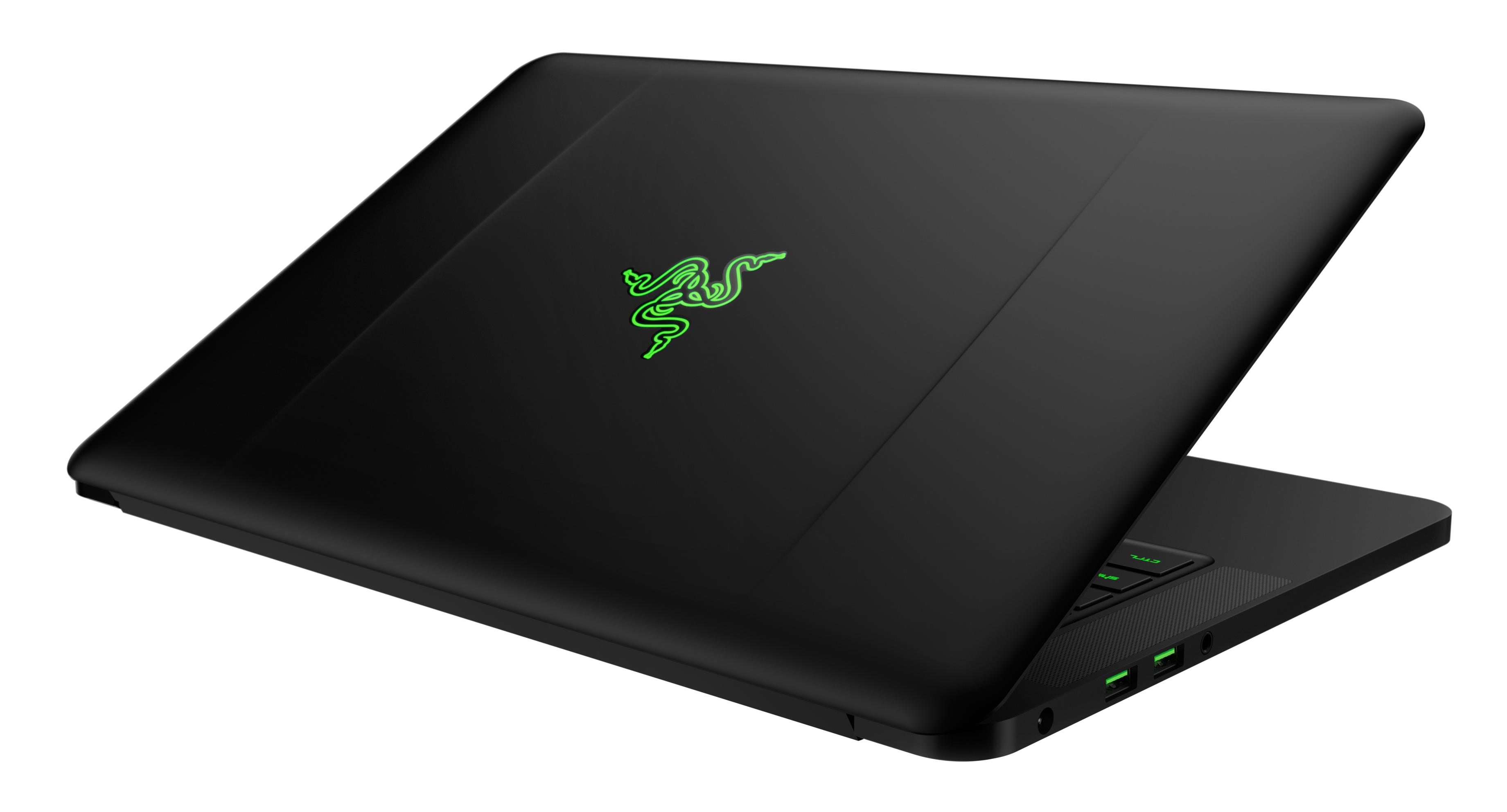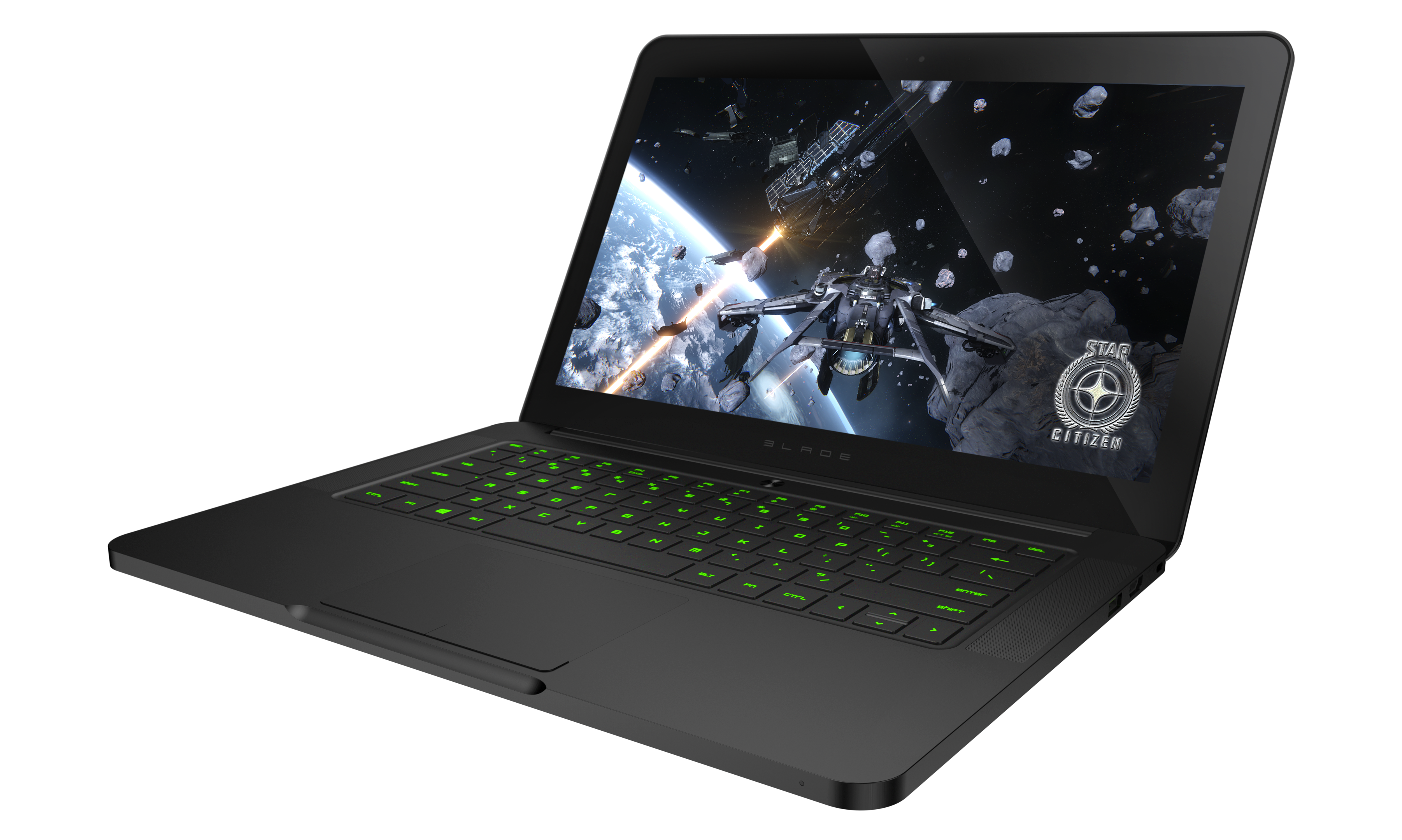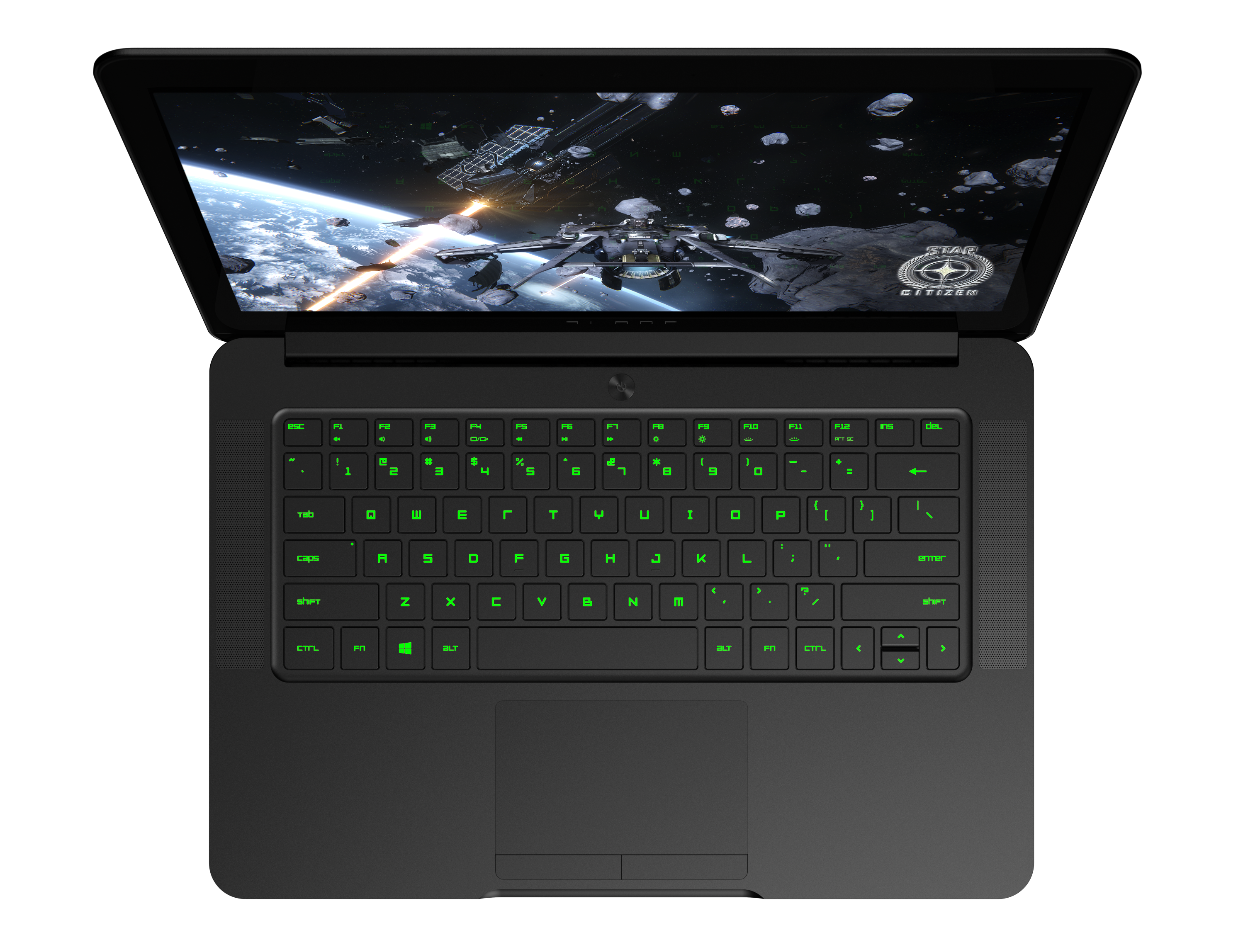Razer Announces New Razer Blade Gaming Laptops Rocking Nvidia GTX 970M GPU, QHD+ Display
Today, Razer launched its latest top-tier Razer Blade gaming laptop. This new system promises to impress gamers worldwide with a series of high-performance enthusiast parts wrapped up in a sleek and stylish 14-inch chassis. Pricing starts at $2,199.
The Razer Blade comes with an impressive list of hardware. It has a quad-core Intel Core i7-4720HQ clocked at 2.6 GHz (up to 3.6 GHz) and a 47W TDP. On the graphics side of the equation, we are presented with an Nvidia Geforce GTX 970M loaded up with 3 GB of GDDR5.
To further help improve performance, the Razer Blade makes use of the new SATA M.2 standard with 128 GB, 256 GB, or 512 GB SSD storage options. The system comes equipped with 16 GB of DDR3L running at 1600 MHz. Other specs include Windows 8.1 64-bit, three USB 3.0 ports, stereo speakers, Intel Wireless-AC 7260HMW 802.11ac + Bluetooth 4.0 network connectivity, 2MP full HD webcam, and a built-in 70Wh lithium ion polymer battery.
For the ever-important mouse and keyboard, Razer has taken the time to custom design both for the new system. The company built a backlit anti-ghosting keyboard featuring programmable keys with Razer Synapse 2.0 technology.
The laptop has a pair of stereo speakers on the front of the case. Unfortunately, the performance of the audio codec used, the Realtek ALC283, is a little lower quality than one might hope. Details of this chip are hard to come by, as Realtek's website does not acknowledge the existence of an ALC283, and we did not find any data sheets on it.
The closest comparison is to look at the highest-performing ALC2XX codecs that have information available. These other codecs only net a signal to noise ration (SNR) of 100dB, on par with modern low-end $50 motherboards, and it is likely that the ALC283 performs similarly. With modern desktop systems utilizing codecs and chipsets capable of SNR reaching 115dB and 120dB, it seems that a better codec could have been advantageous. In any case, many gamers prefer to use gaming headsets, which will offer a better audio experience anyway.
It is a good thing Razer decided to put such powerful hardware in this system, because it will be necessary to drive the 3200x1800 LED-backlit IGZO capacitive multi-touch display. For power saving, the laptop makes use of Nvidia's Optimus technology, in conjunction with integrated Intel HD Graphics 4600, to help preserve battery life when not playing games.
Get Tom's Hardware's best news and in-depth reviews, straight to your inbox.
However, this comes with a minor down side. As a result of the integrated graphics only supporting an HDMI 1.4a connection, and not being compliant with the HDMI 2.0 standard, Razer was forced to choose between making use of Optimus technology or running the HDMI port directly off of the GPU without Optimus support. Given the choices, the company decided to just stay with the HDMI 1.4a standard, but most users shouldn't find this a major issue, as it is unlikely that the laptop's Nvidia GTX 970M would have been powerful enough for gaming at 3820x2160 or the full 4096x2160 resolution while maintaining 30 frames per second, and has little effect on lower resolutions (ie., the Razer Blade's 3200x1800 display).
With a height of just 0.7 inches (17.8 mm) and impressive hardware under the hood (namely, the combined 128 W TDP of the CPU and GPU), heat would seem to be an issue. However, Razer has taken a number of steps to expel heat. The laptop features an aluminum body, which is designed to help by working as a heatsink. Further, knowing the area around the keyboard would be the primary areas touched by users, Razer regulated part placement and air flow so as to cause heat to be dissipated through the aluminum casing at areas less frequently touched by users.
To make the cooling system even more efficient, Razer implemented a dual-fan cooling solution (the same dual-fan hardware that was in the previous-generation Blade) that promises much less noise and greater efficiency than a single-fan configuration. This is made possible by removing the optical disk drive, which today has become almost completely obsolete, and instead making use of the M.2 Sata port.
Specs aside, if there is anything this laptop excels at more than anything, it is design. Not only is the cooling system well thought-out, the outside casing screams luxury. The Razer Blade is detailed in a green and black color scheme; matching Razer's colors, even the USB ports are green; and the keys are backlit with a green glow.
On the back we find the Razer logo placed center field. The logo is LED-lit and glows the same green color as the USB ports and the keyboard. "Razer Blade" is centered below the display in a way that looks good and is unobtrusive.
Razer also announced a Full HD version of the Razer Blade. It has the same CPU and GPU as its bigger brother, but it has half the RAM (8 GB), only offers the 256 GB M.2 SATA SSD option, and of course is has a different display (an LED-backlit 1920x1080 panel). The Full HD Blade starts at $1,999.
Razer's design team has put in a lot of hard work in an attempt to build the best 14-inch gaming laptop that they can. Being the smallest laptop released to date with an Nvidia GTX 970M or higher graphics card, and perhaps the only 14" laptop released inside of the U.S. with an Nvidia GTX 970M, this slender gaming laptop appears to have a lot to offer.
Update, 2/6/15, 6am PST: Removed a quote. Added clarification regarding dual-fan cooling.
Follow us @tomshardware, on Facebook and on Google+.
Seth Colaner previously served as News Director at Tom's Hardware. He covered technology news, focusing on keyboards, virtual reality, and wearables.
-
Maxx_Power If they are going to copy the Macbook design (cudos by the way, it isn't cheap), they should also get rid of that perforated mesh for speaker grilles and use the full-blown micro-holes in solid aluminum of the body approach. It would look a lot sleeker.Reply -
Lmah I wouldn't personally buy a Razer product again after having a bad experience with Synapse in the past. Though I did like the DeathAdder prior to Synapse.Reply -
frelled Specs still aren't enough to drive that display resolution. I would just stick to the 1080p screen, especially in this form factor, just to maintain good performance.Reply -
Realist9 Sure, because I want to pay $2K+ to game on a 14 in screen. Or make extra room on my desk to have this thing open to use, but using video out to a normal gaming monitor. Or use it on my lap (it is a 'laptop', right?) on a plane/bus/train to game on the trackpad. (/sarcasm).Reply
Who buys these things, and how do they actually get used???



